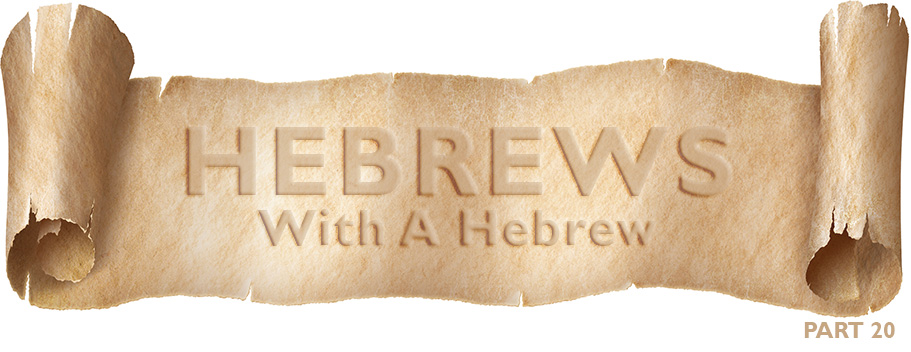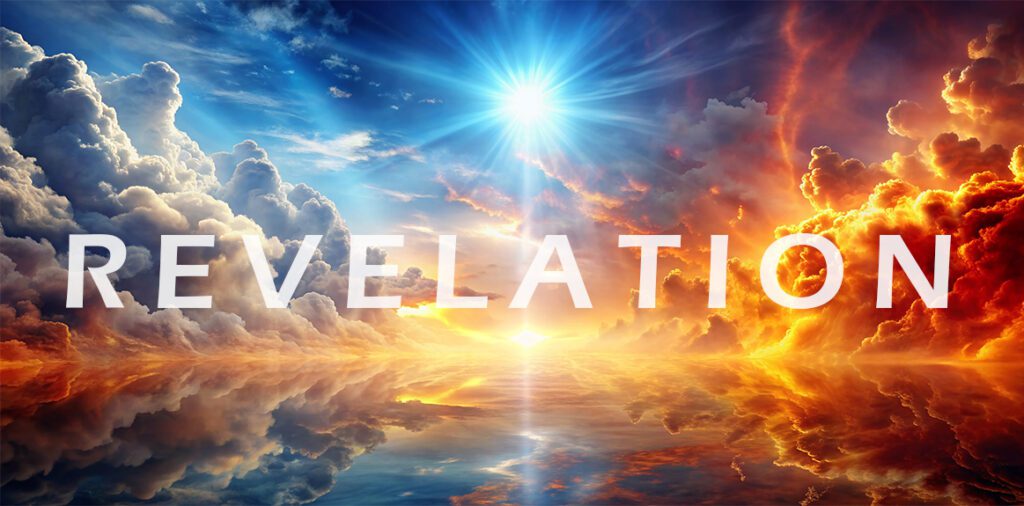Now, even the first covenant had regulations for worship
and an earthly place of holiness. For a tent was prepared,
the first section, in which were the lampstand and the table
and the bread of the Presence. It is called the Holy Place.
Behind the second curtain was a second section called the
Most Holy Place, having the golden altar of incense and
the ark of the covenant covered on all sides with gold, in
which was a golden urn holding the manna, and Aaron’s
staff that budded, and the tablets of the covenant. Above
it were the cherubim of glory overshadowing the mercy
seat. Of these things we cannot now speak in detail.
These preparations having thus been made, the priests
go regularly into the first section, performing their ritual
duties, but into the second only the high priest goes, and
he but once a year, and not without taking blood, which
he offers for himself and for the unintentional sins of the
people. By this the Holy Spirit indicates that the way into
the holy places is not yet opened as long as the first section
is still standing (which is symbolic for the present age).
According to this arrangement, gifts and sacrifices are
offered that cannot perfect the conscience of the worshiper,
but deal only with food and drink and various washings,
regulations for the body imposed until the time of reformation.
Hebrew 9:1-10
The author has gone successively through the promised land, the high priest, and the covenant, and now he introduces us to the sanctuary. One of the central aspects of the Old Covenant was the sanctuary. The Tabernacle in the wilderness was where the high priest actually carried on his ministry. The old covenant dwelling of God consisted of a tent, an earthly place of holiness divided into two compartments, separated by a veil. The first section contained three pieces of furniture: the lampstand, the bread of the presence, and the altar of incense (9:1-2). “Behind the second section and the curtain was the Most Holy Place, having the Golden Altar of Incenses and the ark of the covenant covered on all sides with gold, in which was a golden urn holding the manna and Aaron’s staff that budded, and the tablets of the covenant” (9:3).
This reference to the golden altar of incense being located in the Most Holy Place is viewed by many as a mistake in Scripture. But there is no mistake in placing it there for reading the passage in context; we find it deals largely with the annual Day of Atonement and the rituals associated with it. On that day, it is believed that the altar of incense was moved near the entrance of the Most Holy Place by the veil so that incense might cover the Mercy Seat above the ark while the high priest presented the offering. This meant that the Altar of Incense provided the high priest with incense as he entered the Holy of Holies to present the sacrifice on the Day of Atonement. So it is correct that the writer of Hebrews places it there, for technically, it was placed in the holiest of all on the annual Day of Atonement.
The writer now tells us what this all means. As long as the Holy Place was standing, it had prophetic significance. The first tabernacle was a type of the entire OT era when gifts and sacrifices were offered. As long as that tabernacle stood, it meant that the way into the Holy of Holies still needed to be opened. Only once a year could the High priest go into the holiest of all on Yom Kippur (Day of Atonement). In this chapter, that event is also prophetic of the time when Messiah would come and enter the “greater and more perfect tabernacle that is not man-made.” The whole sprinkling of the blood on the mercy seat typified Messiah’s finished work and what it would mean for us. So the writer sees in the Tabernacle a prophetic significance of the two ages: The present age in which the temple was still standing and the age to come when Messiah appears and accomplishes eternal redemption.
That is the historical-prophetical significance, but there is also an experiential significance to all of this. These two stations of worship also represent two differing proximities to God. There were two veils in the Tabernacle; the one outside separated the Outer Court from the Inner Court, while the one inside separated the Sacred Place from the Most Sacred Place. These two compartments are not representative of the difference between the lost and the saved, but of two differing degrees of proximity to God’s presence. Once we have come to the altar (salvation) and the laver (regeneration), we then have a choice as to where we are going to live our lives, in the Holy or Holiest of all.
What exactly was the Holy place? It was much nearer to God than the Outer Court, but a veil still separated them from the Holy of Holies. There was a veil between us and the presence of God. The veil has been rent, but there still seems to be a veil between us and God. The reality of the Holy Place is that it was the place of busy service. That’s why the writer of Hebrews says, “According to this arrangement, gifts, and sacrifices are offered that cannot perfect the conscience of the worshiper but deal only with food and drink and various washings, regulations for the body imposed until the time of reformation” (Hebrews 9: 9-10). We read that in the holy place the gifts and sacrifices offered “could not make the worshipper perfect in conscience.”
What is life in the Holiest of all? When the priest entered, there was no artificial light. The only light in the Holiest was that of the Shekinah. That was the light of God that was so bright that the white robe of the priest showed up gray and soiled. That is why the priest had to offer incense to cover the mercy seat so he wouldn’t see the glory of God. Living in the Holiest means living in the light where everything is seen for what it really is.




0 Comments